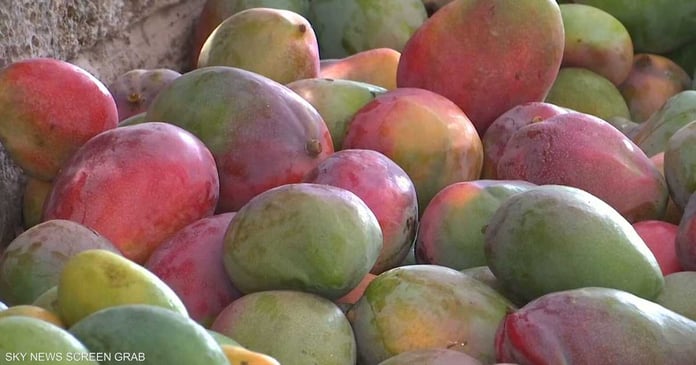In Egypt, fears about the effects of climate change on agriculture have increased, especially in summer, when famous fruit varieties expected by large segments of citizens have spread to the market, including mangoes.
For his part, Shaker Abul-Maati, professor of climate at the Agricultural Research Center of the Egyptian Ministry of Agriculture, explained that climate change has caused damage to various agricultural crops, in particular mangoes and olives, but it pointed out that the interaction of the Ministry of Agriculture with farmers and its continuous sending of recommendations have greatly contributed to reducing this damage.
Abu Al-Maati added to Sky News Arabia the most significant weather changes that have occurred in Egypt and affected crops:
Climate change does not include one element, but an integrated group of elements, and this year there has been a strong fluctuation in the climate in Egypt, which has caused the seasons to overlap in an unnatural way, and in such cases, the human being is affected physiologically as well as the plant. We are in a volatile atmosphere, right now it is considered spring, and the weather is supposed to be at the peak of moderation, but we find that the temperature reaches 43 degrees Celsius during the day and then drops to the twenties at night, which affects the plant. We know that the months of December, January and February are when the rain falls, but what happens is that the winter season has extended until it overlaps with the spring season and then the summer overlaps with the fall season, and the weather becomes like summer during the day, then winter at night, and these differences are in temperature, humidity and rain reflected on plants and crops. The Khamaseen winds, for example, have passed their time, but the appearance of strong winds or dust-laden thunderstorms at this time is not normal, as well as the rain in the spring, which repeated itself in the autumn, and it is not known whether it will fall in summer or not. Climate change in general has affected all crops, including mangoes, and we cannot estimate loss and damage at this time, nor damage from the recent dust storm. The process of monitoring the effects of climate change is still ongoing and monitoring specialists from the Directorates of Agriculture or the Horticultural Institute continue to monitor and measure the extent of damage in each category. There are different varieties whose impact varies, because local varieties are different from imported varieties, and each variety has a certain percentage of impact that occurred on it, and the percentage of damage that occurred can be understood more clearly at the end of the season. The repercussions of climate change have significantly affected mango and olive crops in recent years. The mango harvest is not late for its normal date, as the mango varieties are diverse and appear at different times from late June, early July, through early October and November. It is normal for so-called “shakes” to occur in the trees, i.e. when there are 5 or 6 fruits on the flower bed and 2 or 3 of between them fall, which is normal, but when strong winds blow which cause all the fruits to fall, it is not normal, and it happens as a result of climatic factors. .
Shaker made several recommendations for farmers to contain climate change, including:
The need to build a fence around farms and a fence made of trees to protect crops from heat damage and fast winds that cause fruit and flower drop. Good irrigation, fertilization, short irrigation periods, and providing trees with enough food to store them indoors, making them resilient to shocks. Spray trees to get rid of spiders that spread there after dusty winds have passed. The blowing of the wind causes friction between the fruits and the branches, resulting in mechanical injuries that force the farmer to spray preventively to protect the crop from fungal or bacterial diseases, in order to reduce crop damage. When the fruits fall near maturity, the custard cream process can be used, which involves covering the fruits with rice straw or any covering to raise their temperature, causing them to reach the stage of physiological maturity, which is what is used, for example, with green tomatoes until they turn red. Not all varieties are suitable for the fermentation process. In the governorates of Lower Egypt, such as Ismailia or Buhaira, the fruits dropped by the wind are small and immature, so the fermentation process is not suitable for them, but they can be pickled, although the policy of pickling is not widespread enough in Egypt at present.
Read the Latest World News Today on The Eastern Herald.


